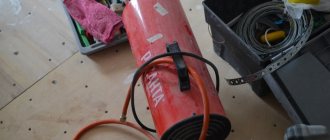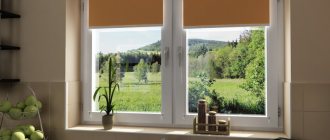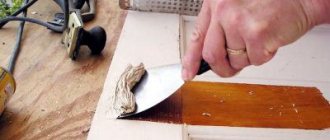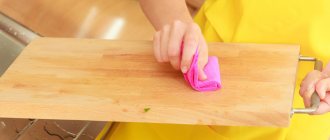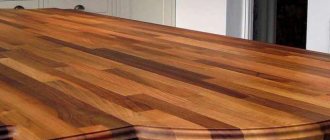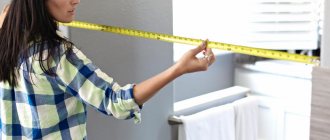Installing a wooden staircase with your own hands is a labor-intensive and quite complicated process for a beginner, as it requires certain training, skills and abilities.
It is obvious that securely fastened and perfectly adjusted staircase elements make the structure as stable and reliable as possible, eliminating creaks, swaying and deformation. However, novice craftsmen often neglect simple rules, which leads to distortions, premature destruction and other extremely unpleasant consequences.
In this article we will try to talk about the key points of assembling and installing rotary flight stairs so that you do not make mistakes in practice.
If you don't have a finished project, we recommend that you use our online staircase calculator . It allows you to receive a ready-made estimate, a set of drawings, a 3D model and recommendations for manufacturing the most convenient design.
Content
- Introduction
- Wood grain direction
- Wall stringers
- External stringers
- Attaching the stringer to the ceiling
- Connecting stringers to each other
- Attaching steps to a string - methods
- Methods of fastening balusters
- Installing railings on stairs
- Attaching the handrail to the pole
Required tools and materials
To attach wooden steps, you will need the following tools:
- screwdriver;
- hammer;
- set of self-tapping screws;
- plane;
- a set of carpentry tools;
- building level;
- pencil or pen for marking;
- ruler;
- set of studs.
This is a set of tools that will suit most mounting methods. In some situations it turns out to be excessive or it needs to be supplemented with special components.
Introduction
Installation of a staircase, like any other structure, is carried out in stages. First of all, parts are always installed that perform the function of load-bearing elements and access to which will be difficult in the future.
However, each master has his own exact sequence of assembling individual elements, and any of these methods does not claim to be the only correct one.
To avoid asymmetry, after each stage of work, check with a level that the horizontal and vertical projections are observed.
Wood grain direction
When manufacturing staircase elements, you should pay special ATTENTION to the direction of the wood grain . Drawings must be transferred to the source material, taking this feature into account, along the greatest direction of the template.
Wood has such a quality as anisotropy - that is, its physical and mechanical properties differ depending on the direction within the medium. For example, the compressive strength of wood along the fibers is 3-4 times greater than across the grain, the tensile strength is more than 30 times greater, and the indicators for fracture and chipping are similar. Professional carpenters know these nuances and produce products in accordance with certain rules that allow them to achieve the highest possible reliability of the final product.
For example, the winder step at the junction with the turning post has a rather small support surface, as a result of which an increased load is applied to this place. If the wood fibers are located parallel to the front edge (that is, along the larger side), the load is distributed evenly over the entire element , and if perpendicular, then near the attachment point, a break will soon occur along the direction of the fibers in the narrowest place.
The situation is similar with stringers in places where steps are cut - the direction of the wood fibers must be parallel to the upper and lower edges of the board. Otherwise, unreasonable arrangement of fibers will definitely lead to the appearance of a defect.
Common mistakes
Before you begin the actual construction of the stairs, you should definitely familiarize yourself with the most common mistakes that often arise when installing stairs yourself. In this case, it is worth highlighting a few.
- Incorrect step height. Current standards stipulate that it should not exceed 19 centimeters, otherwise the design will be inconvenient for use. Such steps will cause discomfort to small children and the elderly. When it comes to residential premises, the maximum step height is 19 cm, and for non-residential buildings 17 cm. It is necessary to pay attention to the fact that if the layout feature does not allow compliance with these parameters, it is possible to adjust the step height to 20 cm.
- Uneven size of steps. Differences in height and width may cause accidents.
If they are different, the optimal rhythm of a person’s walking will be disrupted.
Attaching support posts to the floor
Support pillars are vertically located load-bearing elements that form the basis of the frame of the lower part of the staircase. They provide support for the winder steps (landing) and the stringer (string).
There are no special requirements for the wood of the part - the main thing is that it is uniform, without cross-layers and large knots. Typically made from the same type of wood as the rest of the staircase.
In order for the future structure to be strong and reliable, the pillars must be firmly secured. This can be done using steel angles, studs, zip bolts, wood glue and other devices - there are a lot of options.
Finally, it is recommended to connect the columns with supporting stiffening beams.
Of course, by this time, all the technological holes and grooves for other elements of the staircase should already be made in the pillar structure.
How to attach the stands to the bowstring?
The racks must be secured to the surface of the support beam with studs. To do this, you will need a regular drill and a miter saw. The materials you will need are the bowstring itself, fencing posts, galvanized studs with a thread of at least M6, and PVA glue in a tube. Typical work sequence:
- It is necessary to mark the places for attaching the railings in the form of racks. If a complex design is chosen, it is recommended that the project be checked by professionals;
- It is recommended to securely fasten the stand and cut off its lower corners, maintaining the angle of the inclined beam;
- Make holes with a diameter of 12 mm for a length of 80 mm;
- Drown the pins in the adhesive and insert them into the holes, leaving 7 centimeters out;
- Make holes in the bowstring; to do this, the drill bit needs to be secured to 14 mm. Work depth – 10cm;
- The balusters are inserted with pins, and the fixation process starts from the outer pillars.
Installation of a stringer
Stringers are the main load-bearing elements of a flight of stairs, which are mounted at an angle to the adjacent floor. Do-it-yourself installation of stair steps is carried out directly on the stringers, in pre-prepared recesses.
Wall stringers
Installation of the supporting structure begins with the installation of a wall stringer. For convenience, it is recommended to make markings on the wall in advance and, immediately before assembly, additionally double-check the accuracy of the structure with a level.
It is highly recommended to glue all connections and fastenings of parts with liquid nails or glue.
Usually the installation process begins with fixing the lower part of the stringer. To do this, the beam is installed and pressed into the groove connection or groove on the support column. A temporary support structure can also be made if it is planned that the stringer will be supported on the outside of the support column.
Then they begin to attach the upper part of the stringer. Depending on the type of floor: wooden, metal, concrete, different types of fasteners can be used. For example, in wooden houses, it is preferable to use angles, bolts, studs and anchors.
To strengthen the structure, it is also recommended to install stringers in the cuts of the load-bearing floor beam.
At the final stage, the main section of the beam must be pressed against the wall with pre-prepared dowels or anchors. If necessary, the attachment point of the stringer and support beam is additionally reinforced with a metal corner.
In order to prevent squeaks from adjacent structures in the future, all joints should be generously rubbed with paraffin, except for those where glue will be used.
External stringers
Installing an external stringer is practically no different from a wall stringer. By analogy, it is necessary to secure the lower part of the beam in any convenient way and then fix the upper part, which is adjacent to the ceiling.
During work, you need to ensure that the stringers are positioned exactly opposite each other, otherwise the design will turn out crooked and many manufactured parts will have to be modified.
After installing both beams, you will end up with something similar.
Attaching the stringer to the ceiling
You should dwell in more detail on attaching the upper part of the stringer to the ceiling, if the upper step is below the level of the second floor . In such a situation, there are quite a few ways of reliable fixation between elements and all of them are almost universal. The stringer can be connected using angles (both internal and lower), supporting steel plates, special clamping U-shaped fasteners; for wooden floors, a tongue-and-groove connection can be used; to fasten the staircase to a concrete slab, fixing it to a reinforced furniture board is acceptable.
Connecting stringers to each other
There are options for non-standard designs, when the stringers are not fixed in the grooves of the support posts, but are attached to them from the outside, or when only one support post is used, and the internal stringers are held only by fastening to the wall. In this case, the question often arises: how to fasten the stringers together?
The most common and universal method is the tongue-and-groove connection. This is quite simple to manufacture, but the most reliable unit that allows you to rigidly fix the parts. If, in addition, you treat the joints with PVA glue, then if the standard loads are observed, such a structure will be almost impossible to destroy.
together using ordinary self-tapping screws, screws or flush bolts (shown schematically in the figure with the screw head protruding outward). This connection also makes it possible to achieve high structural strength, but it can only be used if the stringers are planned to be attached to the support beam.
The second method involves cutting down the grooves in the support column, cutting one of the stringers to the thickness of the other, installing them in the appropriate holes and tying them together with any hardware. The resulting connection will firmly secure the elements of the staircase, and is also guaranteed to protect the structure from creaks and loosening.
On our website you can also calculate the length of the stringers and the amount of materials for their manufacture.
Metal staircase with wooden steps
The wooden elements are attached to the metal base using holes made at a distance of 150 mm. In this case, it is necessary to make an indentation from the edge of 20 mm.
A plywood backing will eliminate errors that arise when welding metal elements
When welding metal components, errors could be made that caused minor differences in height. In this case, to eliminate irregularities, a substrate is glued to the frame. Plywood with a thickness of 10 mm is suitable for this.
Metal structure cladding
To ensure that the substrate is securely fixed, self-tapping screws are additionally used. Polyurethane foam is not suitable for these purposes. After hardening, it will begin to crumble under the influence of load, which will lead to loosening of the steps.
The wooden tread is pressed against the plywood with clamps and secured with self-tapping screws. To make a staircase with a metal frame look attractive, craftsmen advise making steps with protrusions. They will hide the ugly metal frame.
Attaching steps to the stringer
The next stage of building a staircase to the second floor with your own hands is attaching the steps to the stringer.
In cases where the design of the staircase also requires the presence of risers, it is recommended to install them first.
Let us remind you that the height of the risers should be approximately 1-2 mm less than the height of the steps. This is done so that in cases of increased humidity, when the wood swells, deformation of the entire structure does not occur.
After this, you can begin to directly install the steps. Straight elements along the stringer are installed simply and there is no point in going into detail, but the installation of winder steps should be considered in more detail.
There are two main ways to install winder steps:
- tongue-and-groove connection (classic);
- connection with the cut of the support column.
The first method assumes that in order to install the rotating elements, you will need to make blind grooves in the main support column. The vast majority of experts recommend making grooves slightly smaller than the thickness of the step, as this will allow the elements to be connected as tightly as possible and prevent their movement. In turn, this will prevent deformation of the structure and eliminate the appearance of squeaks.
The second method involves cutting through the support column to a thickness equal to the thickness of the step. The entire structure is fixed using wood glue or a pin wound inside the support column. To strengthen the selected connection, it is also practiced to create small grooves (locks) in the rotary stage to securely fix the entire assembly.
The outer side of the step, in both cases, must be attached to the frame made of winder stringers or supporting stiffening beams using PVA glue or self-tapping screws. If necessary, all connections are reinforced with metal corners.
Our website has a program for calculating winder steps - you will have access to drawings with actual dimensions, technical specifications and the amount of materials for manufacturing.
Fastening risers
This process can be carried out in various ways. It depends on what material your staircase is made of, taking into account whether it will be hemmed underneath. The fastening parameter is also influenced by the arrangement of the stringers.
There are three main ways to perform fastening. Let's look at each of them.
- Classic installation, where fastening is carried out in a groove.
- Fastening to the end using self-tapping screws. The same method involves installing fittings using glue.
- Installation of risers using a corner.
You should choose one method or another based on your own preferences and the scope of use of the staircase structure.
Installation of ladders on a bowstring
The string is the main load-bearing element of the staircase structure, which is located in an inclined plane relative to the surface of the floor/ceiling.
The main difference between a bowstring and a stringer is the method of installing the steps. On the bowstring, the steps are installed from the inside into pre-cut grooves, and on the stringer they are placed on top in special recesses.
When assembling the entire structure, it is assumed that first the treads and risers are installed on one string and only then the second one is pressed on the other side using a special hammer.
This design feature predetermines some difficulties when installing a staircase, since you first have to assemble a whole flight (string along with steps) in one place, and only then secure this bulky structure in another.
The remaining stages of installation exactly coincide with the stairs on stringers.
It should also be noted that bowstring ladders have greater bending strength, but due to drying of the wood and the lack of uniform lateral adhesion, the sidewalls are able to move slightly apart over time. Therefore, this type of structure is often reinforced with cords, which can be made of wood or metal. They are recommended to be installed at the beginning, middle and end of the flight or every five steps.
Attaching steps to a string - methods
The classic version of assembling a wooden staircase with your own hands implies that the steps must be assembled before the march structure is installed in a given location. In this case, at the initial stage of assembly, all joints of the elements are lubricated with a special adhesive, risers and treads are inserted into the grooves, and, if necessary, reinforced with self-tapping screws.
However, recently designs with overhead bars and corners have become increasingly popular. In this case, specially placed stops are attached using nails or self-tapping screws directly to the body of the bowstring, and the tread, in turn, is installed on them.
In this case, the assembly of the stairs is carried out by analogy with the structure on stringers, that is, there is no need to first assemble the entire flight and only then install it at a given position.
A bowstring staircase is an excellent solution for a spacious home; try our tool to get a finished design project.
Corners and stripes for stair steps. What are they?
They are called differently: stair corners, corners, stripes, etc. The essence does not change - these materials help protect the edges of stairs from abrasion by shoes, dirt, dust and other external factors. In addition, corners for steps transform the appearance of the staircase and make it more neat and beautiful; they mask possible defects and complete the entire structure. And of course, strips for stair steps protect the stair floor covering from any external factors that could lead to its destruction.
This is why many homeowners choose to install stair nooks in their homes. And manufacturers are releasing new and more advanced models. How are they different from each other?
DIY installation of balusters and railings
Assembling the staircase railing is the last and one of the most important stages of installation. Durable railings ensure safe operation of the structure; they must protect people from accidental falls and must withstand the weight of people when leaning on them.
To achieve this effect, there are certain recommendations that determine the most optimal location of the balusters. For example, the clearance between the columns should be in the range of 15-20 cm; this does not make the structure much heavier, but prevents a child from falling from the second floor. It is also recommended to maintain the height of the handrail at 90-110 cm, since this is the most optimal value that will be convenient for the average person to support.
Methods of fastening balusters
To ensure that the railings are safe, stand firmly and do not wobble during use, several proven methods of attaching balusters are used:
- metal studs;
- metal platforms;
- dowels;
- self-tapping screws
Steel studs
Steel studs are one of the most popular fastening methods, as they provide the greatest strength of the connection. Experienced specialists recommend using studs when installing support balusters.
Based on the type of rod, they are divided into smooth and threaded.
In the first case, to create a strong connection, you need to drill a hole in the baluster at least 4 cm deep, add some liquid nails, carefully hammer in the existing pin and wait until the glue dries completely. After this, you need to make a similar cavity in the floor surface, also lubricate it with glue and connect the parts.
In the second case, you will also need to make a hole, but with a diameter 0.5-1 mm smaller than the diameter of the pin so that the wood does not crack when twisted. You can screw the rod into the support post using a lock nut.
It is also worth noting that mounting the structure on studs is only possible when the elements are placed perpendicularly, so it is impossible to use this method for a bowstring.
Metal platforms
Metal platforms (hidden gear fasteners) are a fairly modern type of connection, which also allows you to completely hide all fastening elements.
The principle of operation of the mechanism is extremely simple - there is a steel platform in the shape of a lock, with four fastenings for self-tapping screws around the perimeter. In the middle there is a widened hole into which the bolt head is inserted, and a narrower elongated hole has a beveled side on the inside. Thus, by driving the head of the fastener inward and hammering it to the far side, we obtain a strong locking connection.
A fence completely installed in this way cannot be moved after all the supporting columns have been installed, but individual elements can be easily replaced if broken if you tap a mallet in the direction of the lock extension.
The main disadvantage of this connection is its applicability only in the horizontal plane - for a beveled march, it is necessary to use other types of fastening.
Wooden dowels
Dowels are cylindrical fastening products in the form of a short rod, most often made of wood.
They are used for fastening intermediate fencing elements or in cases where a threaded connection cannot be used, for example, on beveled surfaces.
The installation method is similar to installing smooth studs - first, a hole equal to half the length of the dowel is drilled in the end of the baluster, then it is filled with wood glue, and only then a wooden rod is installed there. After one connection has acquired the necessary strength, the pole is attached to the stairs.
The disadvantage of this type of fastener is the inseparability of the resulting assembly and, as a result, possible damage to adjacent structural elements during dismantling.
Primary requirements
The manufactured staircase must meet the established GOST parameters regarding:
- heights;
- width;
- tilt angle;
- size of steps and risers of the structure.
Let's consider the optimal sizes of staircase elements.
- The marching platform must have a minimum width of 80 centimeters. It is measured from the surface of the wall, taking into account the thickness of the finish, to the inside of the handrails.
- The width of the march, which will be comfortable for a person, ranges from 90 to 100 centimeters. It is necessary to take into account that one march should not include more than 17 and at least 3 steps.
- The optimal height of the steps is 17 cm, but not less than 12 cm.
- The optimal width of steps is in the range of 25-32 cm.
Treatment of steps with protective agents
Now you know how to make your own steps for a wooden staircase. Next, it is necessary to ensure their protection from damage and exposure to external and internal factors. Special means are intended for these purposes. These include impregnations, varnishes and paints.
Impregnation protects wood from damage
Impregnation is a liquid that penetrates the wood structure and gives it certain properties. The most common are:
- Fire-retardant compounds that increase the resistance of wooden elements to high temperatures.
- Antiseptics are products that protect wood from fungi and bacteria. These compounds prevent rotting of the material even in conditions of high humidity.
- Complex impregnations that simultaneously perform the functions of tinting and disinfection.
In order for the impregnation to be evenly distributed over the wooden workpiece and deeply saturated, it is recommended to apply it to the products before installation.
Paint and varnish products are used at the very last stage of work. The only exceptions are the components of the railing, which are more convenient to paint and varnish disassembled.
Alkyd and alkyd-urethane products are suitable for painting marches; enamels are suitable for railings and risers. It is customary to coat stairs indoors with alcohol-based varnish with a matte or glossy composition. Stair structures from the street are treated with nitrocellulose products.
